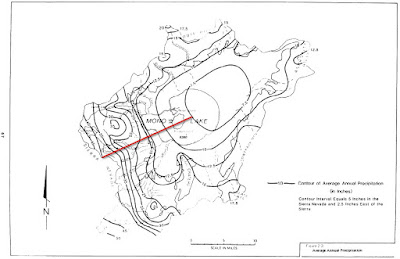I love this Outside article (
Drawing a line in the sand over river rights, by Chris Colin)--I love that someone did this. Raising awareness of when public rights are being usurped by private interests is always a good thing. And this one is close to my heart--for a while I made it a hobby to float any and all navigable waters (the smaller the better). And when you spend a lot of time outside off the beaten track, you run into private property obstacles and questions all the time.
 |
Sometimes you have to combine skiing and
kayaking to get where you want to go. Stumps
in the distance are below the high water line of
Grant Lake Reservoir. |
Easement Etiquette
As much as I like the article, I don't approve of how the author went about exercising his rights. It made for a good article, but there needs to be some etiquette when exercising the right to use prescriptive easements and navigability easements and sovereign lands:
1. Be courteous - respect wildlife, other recreationists, the privacy of adjacent property owners, and avoid dwellings
2. Leave no trace
3. Be invisible, if possible - if they don't know you are there you won't get hassled
4. Contact property owners and agencies when the public is being bullied, and bring wire cutters (e.g. look up the East Walker River from the Hwy 395 bridge--if you wanted to float it, you would need them).
Essentially, behave like you are in a campground. Respect the campers in the campsites you are next to (or you are taking a shortcut through if no one is home).
Special Cases
The problem is that the Russian River situation is rare. Where the public's rights are clear, and the property owners are clearly violating them, that is a good place to write an article to raise awareness. But those situations (in California) are the exception. Here grey areas are the rule. The following are categories of grey areas I've encountered.









